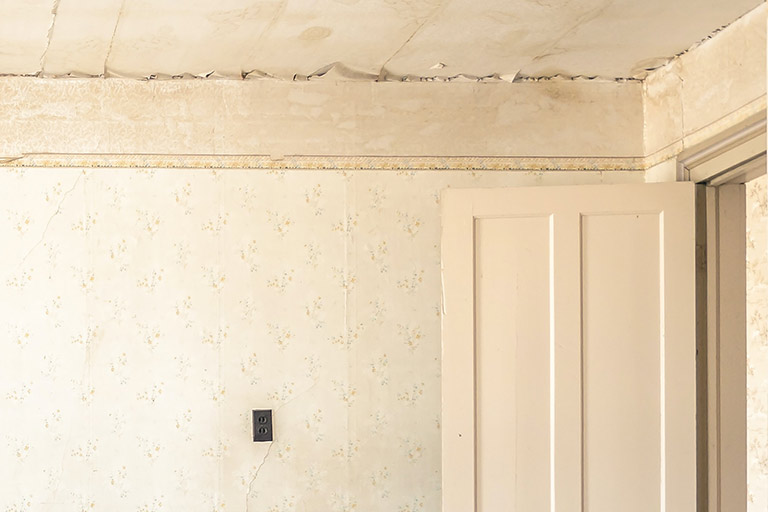Dealing with cracks at ceiling and wall can be concerning. In this comprehensive guide, we’ll delve into the complexities of “Cracks at Ceiling and Wall,” exploring the potential causes, assessing the severity of the issue, and providing practical solutions for effective repair and prevention.

Understanding the Dilemma: Cracks at Ceiling and Wall
The appearance of cracks at the junction of the ceiling and wall is not uncommon in homes. However, the key lies in deciphering the type of crack and its potential implications. Let’s dive into the various aspects of cracks, unraveling their causes and offering insights into how to navigate this structural challenge.
Common Causes of Cracks at Ceiling and Wall
- Structural Movements: Natural settling of a house over time can result in structural movements, leading to cracks at the ceiling and wall interface.
- Temperature and Humidity Fluctuations: Seasonal changes and variations in humidity levels can cause materials to expand and contract, contributing to the development of cracks.
- Foundation Issues: Problems with the foundation, such as settling or shifting, can create stress points in the structure, manifesting as cracks along the ceiling and wall.
- Water Damage: Infiltration of water through leaks, seepage, or inadequate drainage can weaken the structure, causing cracks at the vulnerable junction.
Assessing the Severity
- Width and Depth: Measure the width and depth of the cracks. Generally, wider and deeper cracks may indicate more significant structural issues.
- Direction of Cracks: The direction of the cracks can provide insights. Vertical cracks might be related to settling, while horizontal cracks could signal foundation problems.
- Additional Symptoms: Look for additional symptoms such as door or window misalignment, uneven floors, or gaps between walls and floors, as these can indicate underlying issues.
Addressing Cracks at Ceiling and Wall: Practical Solutions
- Fill and Paint: For minor cracks, filling with a quality patching compound and repainting can provide a cosmetic fix. However, this may not address underlying structural concerns.
- Sealant for Minor Gaps: Use a flexible sealant for minor gaps. This helps prevent moisture intrusion and can be a temporary solution for small, non-structural cracks.
- Consult a Professional: For significant or recurring cracks, consult with a structural engineer or a professional contractor. They can assess the severity of the issue and recommend appropriate solutions.
- Foundation Repair: If foundation issues are identified, foundation repair may be necessary. This could involve underpinning, reinforcing, or stabilizing the foundation to prevent further movement.
- Proactive Maintenance: Implement proactive maintenance measures, including proper drainage, regular inspection for water leaks, and addressing any signs of structural movements promptly.
Preventive Measures
- Maintain Consistent Indoor Conditions: Control indoor temperature and humidity levels to minimize the impact of expansion and contraction on building materials.
- Regular Inspections: Conduct regular inspections of the foundation, walls, and ceiling. Identify and address potential issues before they escalate.
- Proper Drainage: Ensure proper drainage around the property to prevent water accumulation, which can contribute to foundation issues.
Read too: Understanding the Labor Cost to Texture Ceiling and Enhance Your Home: Unveiling the Secrets
Conclusion
Cracks at the ceiling and wall junction can be indicative of various underlying problems, ranging from minor settling to significant structural issues. By understanding the potential causes, assessing the severity of the cracks, and implementing appropriate solutions, homeowners can navigate this challenge effectively. Remember, proactive maintenance and timely intervention are key to ensuring the long-term stability and integrity of your home.